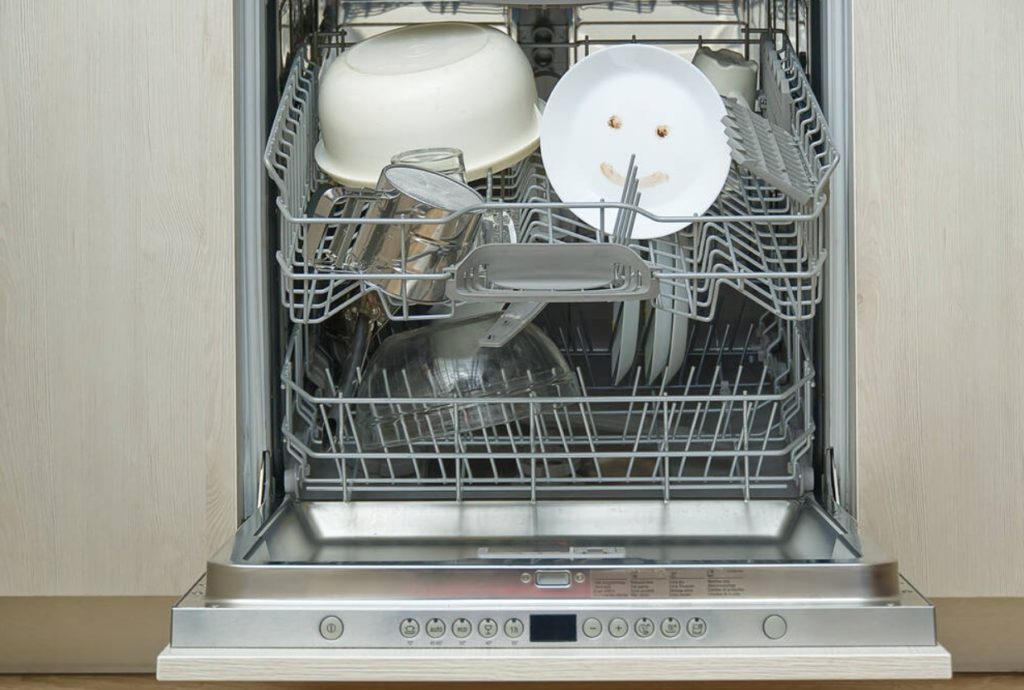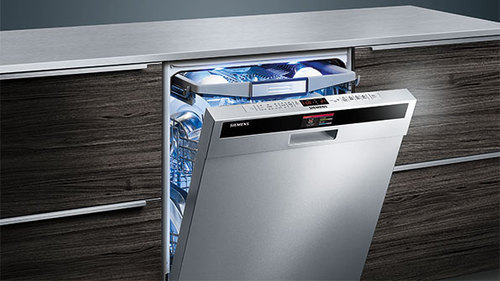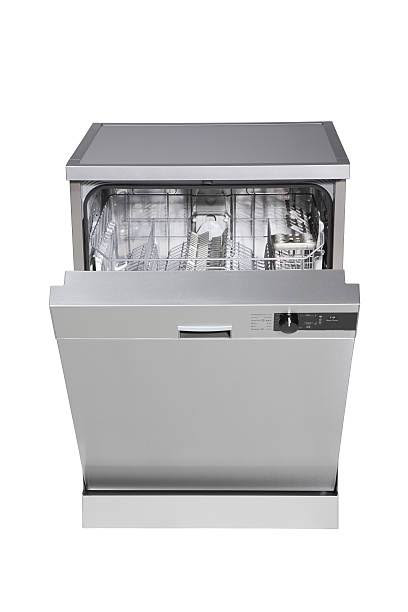Table of Contents
Built-in dishwashers or integrated dishwashers are appliances that fit inside a kitchen cabinet. A lot of households in Australia prefer integrated dishwashers. This is because they blend so well with the kitchen cabinet.
The dishwashers have fewer moving parts and are more streamlined than freestanding models, so they take up less space.
They are also less expensive than freestanding models because no additional sink or countertop is required.
However, not everyone knows the different types of integrated dishwashers available. In fact, it is easy to get confused about which one is more suitable.
This article clearly explains the differences between the integrated dishwasher types and the pros and cons of using this built-in kitchen appliance.
What is an Integrated Dishwasher?
An integrated dishwasher (also referred to as a built-in or built-under dishwasher) is designed to blend in with the rest of your kitchen cabinetry.
It is built into your kitchen cabinets and is typically concealed behind a door panel that matches the rest of your cabinets, allowing them to blend in with the rest of your kitchen. Compared to standalone dishwashers, integrated dishwashers have numerous advantages and also drawbacks
Integrated dishwashers are installed beneath your counter and provide a clean, flush finish to your existing decor. They frequently permit installing a fitted, custom cupboard door that conceals the dishwasher when the appliance is fully closed.
Unlike freestanding dishwashers, which can be moved, integrated dishwashers are more or less permanently installed within the dishwasher cavity. You can also check dishwasher repair cost Joondalup
What is a Fully Integrated Dishwasher?

A fully integrated dishwasher is a built-in dishwasher that blends in with the kitchen cabinetry for a unified, all-in-one appearance. The dishwasher door is available in various colour shades for aesthetic and kitchen design purposes, including the higher-end option of stainless steel.
Fully integrated dishwashers have sound insulation, making them one of the quietest dishwashers available. It not only cleans dirty dishes with its excellent rinse aid, but it is also environmentally friendly due to its low water consumption during the wash cycle.
This full-size dishwasher makes dishwashing a breeze, with easy access to the dish rack for easy loading and unloading.
Pros of a Fully Integrated Dishwasher
A dishwasher that is fully integrated into your kitchen cabinetry can be an aesthetically pleasing and functional addition to your home. Here are a few advantages of having a fully integrated dishwasher:
- Convenience: They are hidden and out of sight, which is useful if you have a small kitchen or want to declutter your counters.
- No noise: Because the noise is contained within the unit, they are generally quieter than other types of dishwashers.
- Valuable: They can increase the value of your home if you decide to sell it.
- Good Features: They typically have high-end features such as adjustable shelves and water softeners.
- Right Fit: You don’t have to worry about your dishwasher matching the rest of your kitchen appliances because it will fit right in.
Dishwashers that are fully integrated blend in with your cabinetry for a sleek, polished appearance. They also outperform non-integrated counterparts in terms of cleaning power and energy efficiency.
Cons of a Fully Integrated Dishwasher
An integrated kitchen can conceal almost anything, including large white goods, microwaves, and even coffee machines and ironing boards. However, as it has its advantages, it also comes with disadvantages which are:
- Costly: Built-in appliances tend to be more expensive. You might end up paying more for the same spec as a freestanding version
- Difficult to repair or upgrade: Integrated appliances have been known to be slightly more costly and difficult to repair or replace or upgrade. With regular freestanding appliance models, an engineer can access a faulty appliance without much trouble, but as integrated appliances are built-in as kitchen fixtures, the job is more difficult and labour intensive
What is a Semi-integrated Dishwasher?

Semi-integrated dishwashers, also known as “drawer line dishwashers,” are designed to fit between your existing kitchen cabinets and beneath your worktop. Due to a control panel at the top of the dishwasher door, semi-integrated dishwashers only require a partial cupboard door to be installed in front of them.
A semi-integrated dishwasher will complement your kitchen’s existing style while gently reminding you that it isn’t just another cupboard.
Semi-integrated dishwashers (drawer line dishwashers) come in widths of 45cm and 60cm.
Pros of a Semi-integrated Dishwasher
For minimalist kitchens, this type of dishwasher is the best option. They have a curved door and a control panel on top.
- Accessible: The control panel is easily accessible without opening the door.
- Efficient: They are more efficient than fully integrated models, resulting in a unified appearance for your kitchen.
- Improves Appearance: They can help to give the appearance of a larger kitchen spac, thus enhancing the kitchen appearance.
- Saves Energy: Semi-integrated dishwashers are also more energy-efficient than full-sized counterparts, which means you can save money on your utility bills.
Cons of a Semi-integrated Dishwasher
Some of the potential disadvantages of a semi-integrated dishwasher include:
- Not so Quiet: Because of the visible button, the visuals aren’t as appealing, and the dishwashing sounds are usually more audible.
- Lesser Capacity: Semi-integrated dishwashers frequently have less capacity than fully integrated dishwashers.
- Expensive: They are also more expensive and harder to find in stores.
What is a Freestanding Dishwasher?

A freestanding dishwasher is not integrated into the kitchen cabinets. It is also known as a “stand-alone dishwasher”. The dishwasher can be placed anywhere in the kitchen and is not restricted by size or layout.
Freestanding dishwashers come in various sizes, colours, and styles to complement any kitchen decor.
A freestanding dishwasher, like a washing machine, can be placed almost anywhere. There is a water connection and a drainage point. You will not need to build a freestanding unit, and it will come with sides and a top cover, allowing you to place it wherever it will fit safely
Pros of a Freestanding Dishwasher
- Easy Installation: It is relatively simple to install and remove.
- Less Expensive: Freestanding dishwashers are less expensive compared to their integrated counterparts.
- Portable/Moveable: You can take it with you if you decide to relocate (especially good for renters)
- Simple-to-clean Surface: You will not be required to clean up after yourself. It can be installed in most shelving systems.
Cons of a Freestanding Dishwasher
The freestanding dishwasher’s biggest disadvantage is its noise. Whereas portable units do not have the luxury of surrounding wooden cabinets to muffle the sound of the water spraying, built-in models do.
The freestanding dishwasher’s thin and lightweight cabinets allow the machine’s operation to be heard throughout the house. This is especially annoying if the unit is being used while the television is on or you are. trying to sleep or talk on the phone.
Most people usually place the dishwasher quite far away from the living room or in the garage due to the noise.
Integrated Vs Freestanding Dishwasher
Choosing a dishwasher is not so easy. But a good comparison between an integrated dishwasher or a freestanding one can help you decide.
- Built-in dishwashers are typically more advanced than freestanding models, with features such as multiple spray arms, specialised wash cycles, and targeted sprays for difficult-to-clean items such as pans or baking dishes.
- However, freestanding dishwashers are not without features. These dishwashers have convenient features such as load-sensing technology, digital timers, and multiple cycles.
- A built-in dishwasher is flush with your kitchen cabinets and fits beneath your countertop. This creates a neat, streamlined appearance, which many homeowners prefer.
- A freestanding dishwasher has been finished on all sides and the top, allowing it to be placed anywhere in your kitchen.
FAQs
1. What are Semi-integrated and Fully Integrated Dishwashers?
Semi-integrated dishwashers, also known as “drawer line dishwashers,” are designed to fit between your existing kitchen cabinets and beneath your worktop.
A fully integrated dishwasher is a built-in dishwasher that blends in with the kitchen cabinetry for a unified, all-in-one appearance.
2. What Makes a Dishwasher Integrated?
The ability to have a full-sized kitchen cabinet door attached to the front of it, thus completely hiding the machine.
3. What does a Freestanding Dishwasher Mean?
A freestanding dishwasher is not integrated into the kitchen cabinets. These dishwashers can be placed anywhere in the kitchen and are not restricted by size or layout.
4. Is an Integrated Dishwasher a Good Idea?
Yes, they are. Because If you prefer clean lines, there is no better option than an integrated dishwasher. Another important reason to install a dishwasher into your cabinetry is that you won’t be able to hear it.
5. Do You Need a Special Door for an Integrated Dishwasher?
Yes, everything you need to install a door is included with your integrated dishwasher, except the door itself.
Conclusion
A built-in dishwasher is integrated into the kitchen cabinetry. A freestanding dishwasher is not built into kitchen cabinetry and can be placed anywhere in the kitchen. A semi-integrated dishwasher is partially built into the kitchen cabinetry.
Feel free to contact City Dishwashers to help with your repair and installation.



